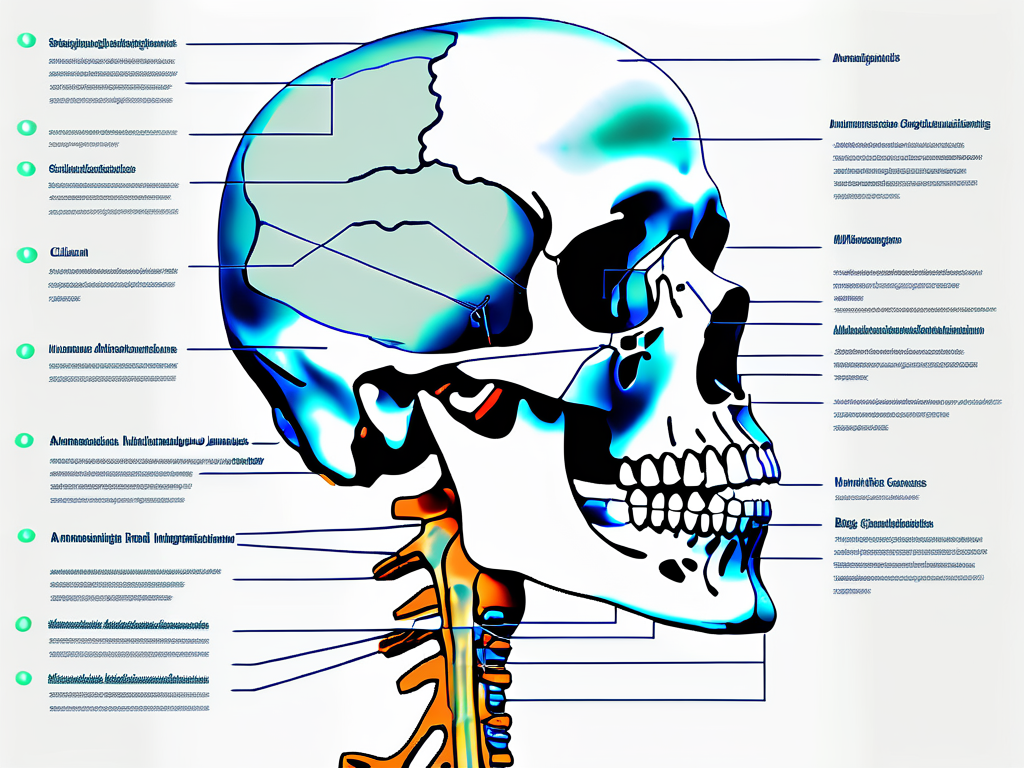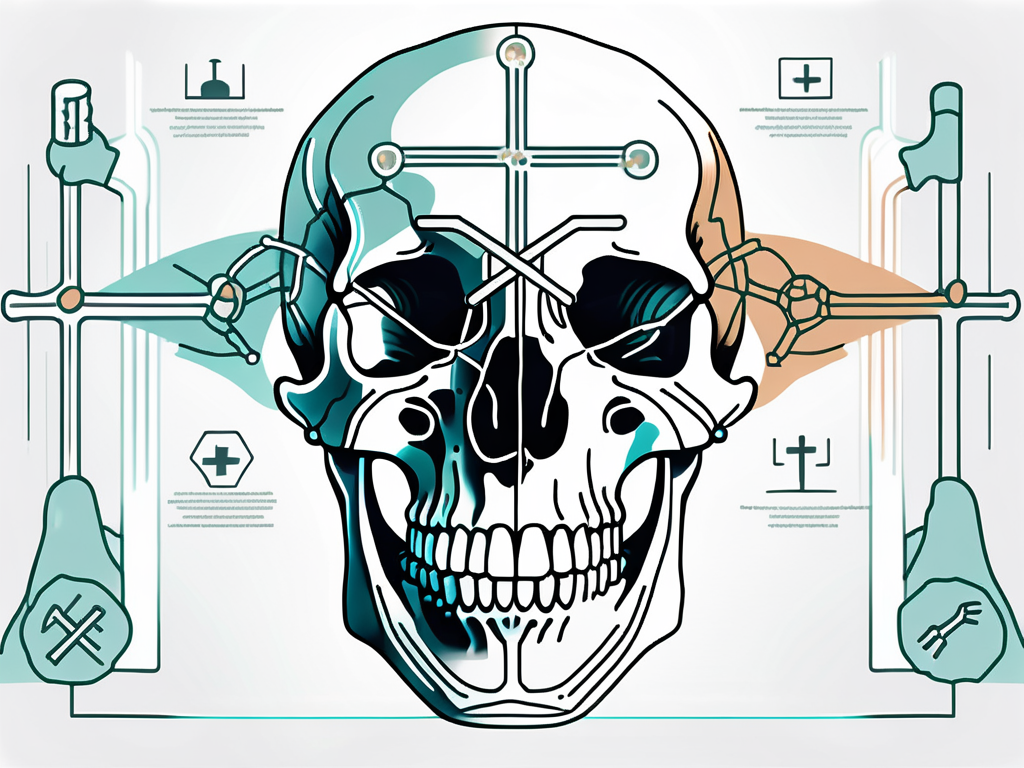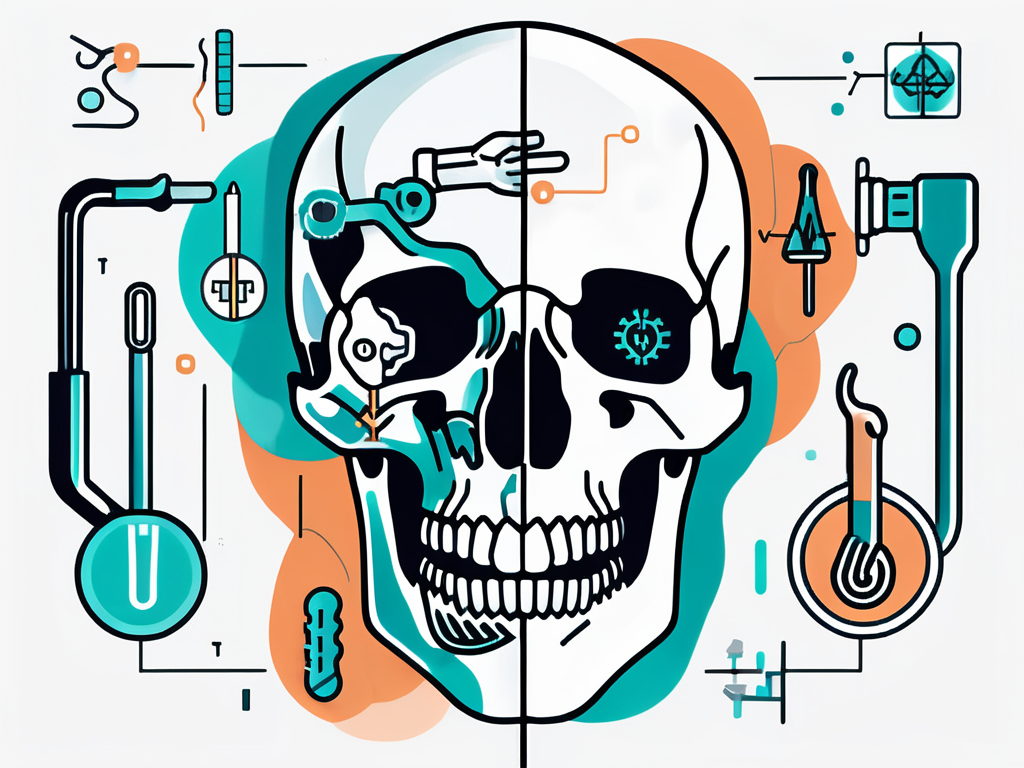Jaw shifting is a common condition that can cause discomfort and affect a person's ability to eat and speak. Understanding the causes and treatments for jaw shifting is essential for those experiencing this issue. In this article, we will explore what jaw shifting is, its potential causes, associated symptoms, methods of diagnosis, and available treatment options.
Understanding Jaw Shifting
What is Jaw Shifting?
Jaw shifting, also known as jaw deviation, occurs when the lower jaw moves to one side instead of staying centered. This misalignment can be temporary or chronic, depending on the underlying cause. It can result in asymmetric facial appearance and functional problems that impact daily life.
The Anatomy of the Jaw
The jaw, or mandible, is the largest bone in the lower face and plays a crucial role in various functions such as chewing, speaking, and facial expressions. It is connected to the skull through the temporomandibular joint (TMJ) on each side of the head.
The TMJ allows for smooth and coordinated movement of the lower jaw. When this joint, or the surrounding muscles and ligaments, experience problems, it can lead to jaw shifting.
One common cause of jaw shifting is temporomandibular joint disorder (TMD), which encompasses a range of conditions affecting the TMJ and surrounding muscles. TMD can be triggered by factors such as stress, teeth grinding, arthritis, or a misaligned bite. These issues can result in pain, clicking or popping sounds in the jaw, and difficulty opening or closing the mouth.
Diagnosis and Treatment
Diagnosing the underlying cause of jaw shifting typically involves a comprehensive evaluation by a dentist or oral health specialist. This may include a physical examination, imaging tests like X-rays or MRIs, and assessing the patient's medical history.
Treatment for jaw shifting varies depending on the cause and severity of the condition. It may involve conservative measures such as lifestyle modifications, physical therapy, or the use of oral splints to realign the jaw. In more severe cases, surgical intervention may be necessary to correct structural issues within the jaw or TMJ.
Potential Causes of Jaw Shifting
Dental Issues and Jaw Shifting
Dental problems, such as malocclusion (misaligned teeth), missing teeth, or incorrect dental restorations, can contribute to jaw shifting. Imbalances in the bite force distribution can lead to an uneven movement of the jaw, resulting in deviation.

In some cases, orthodontic treatment, such as braces or dental appliances, may be necessary to correct alignment issues and alleviate jaw shifting.
It's important to note that malocclusion can also lead to temporomandibular joint (TMJ) disorders, which can further exacerbate jaw shifting. TMJ disorders can cause pain, clicking or popping sounds in the jaw, and limited range of motion.
Neurological Disorders and Jaw Shifting
Neurological conditions, including Bell's palsy, stroke, or other nerve-related abnormalities, can disrupt the normal muscle control and coordination of the jaw. This can result in jaw shifting as the muscles on one side of the face become weaker or paralyzed.
Managing the underlying neurological condition may help reduce or prevent jaw shifting associated with these disorders.
In addition to the conditions mentioned, conditions like trigeminal neuralgia, a chronic pain disorder affecting the trigeminal nerve, can also lead to involuntary jaw movements and shifting. This can significantly impact a person's quality of life and require specialized treatment.
Trauma-Related Jaw Shifting
Physical trauma to the jaw, such as a direct blow or impact, can cause the jaw to shift to one side. This can occur due to fractures, dislocations, or muscle trauma.
Treatment for trauma-related jaw shifting may involve realigning the jaw through surgical intervention or conservative management, depending on the severity of the injury.
It's crucial to seek immediate medical attention in cases of trauma-related jaw shifting to prevent further complications such as infections or long-term jaw misalignment. Rehabilitation therapy may also be necessary to regain full function and mobility of the jaw after a traumatic injury.
Symptoms Associated with Jaw Shifting
Jaw shifting, a condition that affects the alignment and movement of the lower jaw, can manifest in various physical, pain-related, and functional symptoms. One of the primary physical symptoms of jaw shifting is the visible deviation of the lower jaw to one side. This asymmetry may be subtle or more pronounced, depending on the individual.
Furthermore, individuals with jaw shifting may experience difficulty fully opening or closing their mouths, limited jaw movement, or a clicking or popping sensation in the temporomandibular joint (TMJ) area. The TMJ acts as a hinge that connects your jaw to the temporal bones of your skull, and any disruption in its function can lead to discomfort and restricted movement.
In addition to physical symptoms, jaw shifting can be accompanied by pain and discomfort in the jaw joint area, face, or head. This pain may vary in intensity and duration, impacting daily activities and causing significant discomfort.
Headaches, earaches, and neck pain can also be associated with jaw shifting, as the misalignment of the jaw can affect the surrounding muscles and nerves. The strain on these structures can result in referred pain, where discomfort is felt in areas other than the source of the issue, further complicating diagnosis and management.
Moreover, individuals with jaw shifting may experience difficulty chewing food evenly on both sides of the mouth. This can lead to uneven tooth wear, inefficient digestion, and a decreased quality of life when it comes to enjoying meals. Proper alignment of the jaw is essential for effective mastication and overall oral health.
Speech difficulties, such as lisping or slurring, can also occur due to the misalignment and compromised movement of the jaw and its impact on the oral cavity. The coordination required for clear and precise speech can be hindered by jaw shifting, affecting communication and self-confidence.
Diagnosing Jaw Shifting
Medical History and Physical Examination
When diagnosing jaw shifting, a healthcare professional will start by taking a detailed medical history, including any previous trauma or existing medical conditions. They may also perform a physical examination to assess the range of motion and identify any visible deviations of the jaw.

During the medical history assessment, the healthcare provider may inquire about any recent dental work, history of teeth grinding (bruxism), or habits such as nail biting that could contribute to jaw shifting. Understanding the patient's habits and lifestyle can provide valuable insights into the potential causes of the condition.
Imaging Tests for Jaw Shifting
In some cases, imaging tests, such as X-rays, computerized tomography (CT) scans, or magnetic resonance imaging (MRI), may be recommended to visualize the structures within the jaw, joints, and surrounding tissues. These tests can help identify underlying causes and guide appropriate treatment plans.
X-rays are commonly used to assess the alignment of the jaw joint and detect any abnormalities in the bone structure. CT scans provide detailed cross-sectional images of the temporomandibular joint (TMJ) to evaluate the joint's condition and rule out any structural issues. MRI scans are useful for assessing soft tissues such as muscles and ligaments, which can help identify inflammation or damage contributing to jaw shifting.
Treatment Options for Jaw Shifting
Non-Surgical Treatments
Non-surgical approaches are often the first line of treatment for jaw shifting. Depending on the underlying cause, conservative options may include the use of oral splints, medications, physical therapy exercises, or lifestyle modifications.

Oral splints, also known as bite guards or mouthguards, can help stabilize the jaw and prevent further shifting during sleep or times of increased stress on the TMJ.
Physical therapy exercises can also play a crucial role in the non-surgical management of jaw shifting. These exercises aim to improve jaw muscle strength and flexibility, promoting better alignment and reducing discomfort. A qualified physical therapist can guide patients through a personalized exercise program tailored to their specific needs.
Surgical Interventions
In more severe cases or when non-surgical treatments fail to provide adequate relief, surgical interventions may be considered. Surgical options can range from TMJ arthroscopy, which involves small incisions and the use of specialized instruments to address joint issues, to more extensive procedures such as orthognathic surgery to correct skeletal malformations.
TMJ arthroscopy is a minimally invasive procedure that allows the surgeon to visualize and treat the TMJ without the need for large incisions. It can be particularly beneficial for patients with internal derangements of the joint, such as displaced discs or damaged cartilage. During the procedure, the surgeon inserts a small camera called an arthroscope into the joint space, enabling them to assess the condition and perform necessary repairs or adjustments.
On the other hand, orthognathic surgery is a more complex surgical option that involves repositioning the jaws to achieve better alignment and balance. This procedure is typically recommended for patients with significant skeletal discrepancies that contribute to jaw shifting. It may require the collaboration of an oral and maxillofacial surgeon, orthodontist, and other dental specialists to ensure optimal results.
Surgical treatments for jaw shifting should be carefully evaluated and discussed with a qualified oral and maxillofacial surgeon or specialized dental professional. They will assess the individual's specific condition, taking into consideration factors such as the severity of the jaw shifting, the underlying cause, and the patient's overall health, before recommending the most appropriate surgical approach.
In conclusion, jaw shifting can have various causes, including dental issues, neurological disorders, and trauma. Recognizing the symptoms associated with this condition is essential for prompt diagnosis and appropriate treatment. Non-surgical interventions, such as oral splints, medications, and physical therapy exercises, are often effective in managing jaw shifting. However, in severe cases, surgical interventions may be necessary to address underlying structural or functional issues. If you are experiencing jaw shifting, consult with a healthcare professional specializing in oral health or maxillofacial surgery to determine the most suitable treatment approach for your specific situation.
If you're struggling with jaw shifting and are in need of a comfortable, cost-effective solution, consider exploring Remi's custom mouth guards. Specially designed for those who clench their teeth, our mouth guards are crafted from dental-grade, BPA-free plastic and are up to 80% more affordable than traditional options. With the convenience of The Remi Club subscription service, you can receive a new set of top and bottom mouth guards every six months, ensuring continuous protection and peace of mind. Take your first step towards a better night's sleep and improved jaw alignment with our easy-to-use at-home impression kit. Experience the Remi difference and enjoy the confidence that comes with a perfect fit. Shop Now and join the many satisfied customers who have found relief with Remi.













